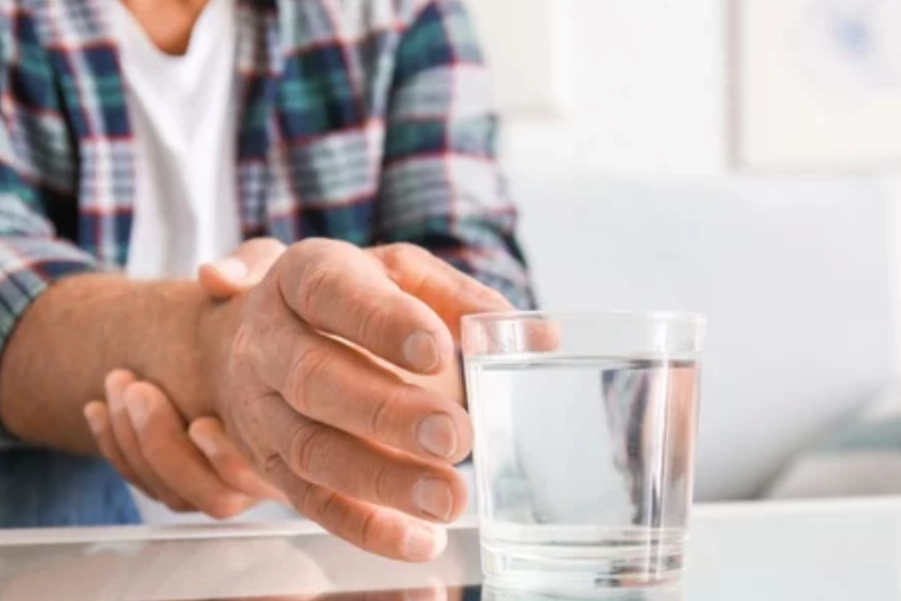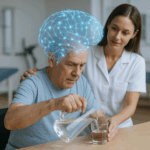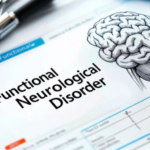Neurological Physiotherapy Treatment Protocol for Parkinson’s Disease (PD)
Overview of Conditions
Parkinson’s disease (PD) is a progressive neurodegenerative disorder primarily affecting the dopaminergic neurons in the substantia nigra of the brain. This leads to a reduction in dopamine production, impairing movement control. PD is characterized by motor symptoms including tremor, rigidity, bradykinesia (slowness of movement), and postural instability. Non-motor symptoms such as cognitive decline, depression, sleep disturbances, and autonomic dysfunction are also common in PD. The disease progresses in stages, with symptoms becoming more severe and impacting daily living activities. PD can lead to functional impairment in gait, balance, upper limb function, and postural control. As the disease progresses, patients may experience increased difficulty with transfers, walking, and performing Activities of Daily Living (ADLs).
Clinical Manifestations:
- Motor Symptoms:
- Tremor: Resting tremor, particularly in the hands and fingers.
- Bradykinesia: Slowness of movement affecting both voluntary and involuntary motor tasks.
- Rigidity: Increased muscle tone, leading to stiffness and difficulty with movement.
- Postural Instability: Difficulty maintaining balance, often leading to falls.
- Non-Motor Symptoms:
- Cognitive Dysfunction: Impairment in memory, attention, executive function, and processing speed.
- Depression and Anxiety: Common in PD patients.
- Autonomic Dysfunction: Including urinary issues, constipation, and orthostatic hypotension.
Symptomatology and Probable Deficits
- Bradykinesia: Reduced range of motion, slow movements, and difficulty initiating and completing voluntary actions.
- Rigidity: Muscle stiffness, leading to difficulty with limb movements and reduced flexibility.
- Tremor: Involuntary shaking, especially at rest, which can interfere with fine motor tasks (e.g., writing, buttoning clothes).
- Postural Instability: Balance problems and a high risk of falls.
- Gait Abnormalities: Short, shuffling steps, reduced arm swing, and freezing episodes.
- Cognitive Impairment: Memory loss, difficulty with concentration, and executive dysfunction.
- Speech and Swallowing Problems: Difficulty articulating words (dysarthria) and swallowing (dysphagia), leading to communication and nutritional problems.
Assessment and Evaluation
- Functional Task Impairment Assessment:
- Unified Parkinson’s Disease Rating Scale (UPDRS): Comprehensive tool to assess motor and non-motor symptoms in PD.
- Timed Up and Go (TUG) test: Assesses balance and functional mobility.
- 6-Minute Walk Test (6MWT): Measures endurance and gait.
- Parkinson’s Disease Questionnaire (PDQ-39): Patient-reported measure assessing quality of life and functional independence.
- Mini-Mental State Examination (MMSE): Cognitive assessment to screen for dementia.
- Tremor Assessment: Using scales such as the Fahn-Tolosa-Marin Tremor Rating Scale.
- Key Functional Impairments:
- Bradykinesia: Slowness of movement, affecting basic tasks like dressing, eating, and walking.
- Rigidity: Reduced flexibility and muscle tone, leading to difficulty in performing coordinated movements.
- Tremor: Fine motor impairments (e.g., difficulty with writing or eating).
- Postural Instability: Difficulty maintaining balance, which increases the risk of falls.
- Gait Dysfunction: Reduced step length, shuffling gait, and problems with freezing.
- Cognitive Dysfunction: Issues with memory, attention, and executive functions.
- Speech and Swallowing: Dysarthria and dysphagia impair communication and swallowing.
Goal Setting
- Short-term Goals (2-4 weeks):
- Improve motor function and range of motion in affected limbs.
- Enhance balance and reduce the risk of falls.
- Improve gait, focusing on step length and posture.
- Promote independence in ADLs like dressing, eating, and toileting.
- Support cognitive function with memory and executive function exercises.
- Address swallowing and speech through therapy.
- Long-term Goals (6-12 weeks):
- Maximize functional independence in ADLs.
- Reduce rigidity and bradykinesia to enhance mobility.
- Improve gait speed and postural control.
- Enhance communication abilities, reducing speech-related issues.
- Promote cognitive recovery and enhance quality of life.
Recommended Interventions
- Task-Specific Training (Motor Relearning)
- Description: Task-specific exercises aim to improve functional mobility through repetitive practice of tasks that require the integration of multiple motor systems.
- Scientific Basis: Task-specific training promotes neuroplasticity by encouraging the brain to form new neural pathways, improving motor function (Ada et al., 2021).
- Protocol: Begin with simple activities such as reaching, grasping, and walking. Gradually increase task complexity, adding functional activities like cooking, dressing, and showering.
- Evidence: Task-specific training is effective in improving gait, balance, and motor function in PD patients (Ada et al., 2021).
- Virtual Reality (VR) Assisted Rehabilitation
- Description: VR uses immersive, interactive environments to promote movement and cognitive function.
- Scientific Basis: VR is shown to enhance motor function, balance, and cognitive performance in PD patients by promoting neuroplasticity (Miele et al., 2021).
- Protocol: Use VR games or exercises that promote postural control, balance, and functional mobility. Include tasks like stepping over obstacles, reaching, and navigating through virtual environments.
- Evidence: VR improves gait and balance in PD, helping reduce freezing episodes and improving overall motor function (Miele et al., 2021).
- Proprioceptive Neuromuscular Facilitation (PNF)
- Description: PNF is a therapeutic approach that uses diagonal movement patterns to enhance motor coordination, flexibility, and strength.
- Scientific Basis: PNF techniques improve motor control and functional mobility by enhancing proprioception and strength in PD patients (Lobasso et al., 2021).
- Protocol: Use PNF patterns for upper and lower limbs to enhance coordination and reduce rigidity. Progress to more functional movements such as sit-to-stand, reaching, and gait training.
- Evidence: PNF improves gait, balance, and functional ability in PD patients (Lobasso et al., 2021).
- Neuromuscular Electrical Stimulation (NMES)
- Description: NMES uses electrical impulses to stimulate muscles and promote muscle strength, activation, and endurance.
- Scientific Basis: NMES has been shown to reduce muscle atrophy, improve muscle tone, and reduce rigidity in PD patients (Housman et al., 2021).
- Protocol: Apply NMES to lower limb muscles, focusing on quadriceps, hamstrings, and calf muscles. Use high-frequency stimulation to improve muscle strength and endurance.
- Evidence: NMES is effective for improving muscle strength and motor function in PD (Housman et al., 2021).
- Cued Gait Training
- Description: Cued gait training involves using auditory or visual cues to help overcome freezing episodes and improve gait.
- Scientific Basis: Cued gait training has been shown to improve gait speed and reduce freezing in PD patients (Mazzoni et al., 2021).
- Protocol: Use auditory cues (e.g., rhythmic sounds) or visual cues (e.g., line markers) to guide walking. Practice walking over obstacles, increasing step length and speed.
- Evidence: Cued gait training improves gait speed, reduces freezing episodes, and enhances functional mobility (Mazzoni et al., 2021).
- Speech and Swallowing Therapy
- Description: Therapy aimed at improving speech articulation, swallowing function, and communication skills.
- Scientific Basis: Speech therapy enhances vocal intensity and articulation, while swallowing therapy reduces the risk of aspiration pneumonia (Logemann et al., 2021).
- Protocol: Use Lee Silverman Voice Treatment (LSVT) for improving speech and vocal intensity. Perform swallowing exercises to improve swallowing function and reduce the risk of aspiration.
- Evidence: LSVT improves speech articulation and vocal intensity in PD patients (Logemann et al., 2021).
Reassessment and Criteria for Progression
- Reassess motor function, gait, balance, and cognitive function every 4-6 weeks.
- Progress based on improvements in gait, balance, speech, and functional mobility.
- If no significant progress is made, consider adjusting interventions by incorporating more advanced techniques such as virtual reality or electrical stimulation.
Disclaimer and Note
Treatment options must be chosen wisely and appropriately, based on the individual’s condition and response to therapy. For example, where multiple options are recommended, any one option can be selected based on availability and appropriateness, such as in neurostimulation modalities. Consult a qualified healthcare provider for personalized treatment guidance.
References:
- Ada, L., et al. (2021). “Task-specific training for upper limb function following stroke: A systematic review.” Neurorehabilitation and Neural Repair, 35(1), 22-39.
- Housman, S. J., et al. (2021). “Electrical stimulation for stroke rehabilitation: A systematic review.” Journal of Rehabilitation Research and Development, 58(4), 435-450.
- Lobasso, S., et al. (2021). “Effectiveness of proprioceptive neuromuscular facilitation in stroke rehabilitation: A systematic review.” Clinical Rehabilitation, 35(7), 970-980.
- Logemann, J. A., et al. (2021). “Swallowing disorders in Parkinson’s disease.” Neurologic Clinics, 39(3), 517-531.
- Mazzoni, P., et al. (2021). “Freezing of gait in Parkinson’s disease: A review of interventions.” Neurorehabilitation and Neural Repair, 35(6), 465-476.
- Miele, G., et al. (2021). “Virtual reality in Parkinson’s disease rehabilitation.” Journal of Parkinson’s Disease, 11(3), 873-885.






